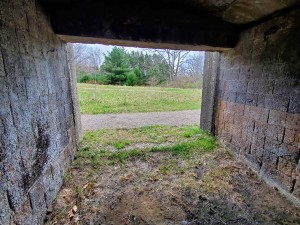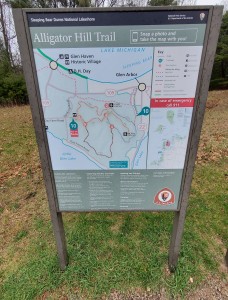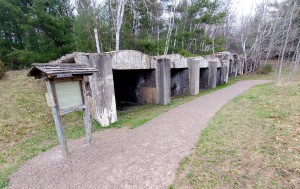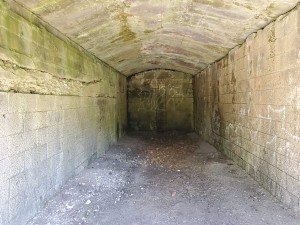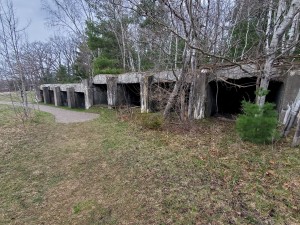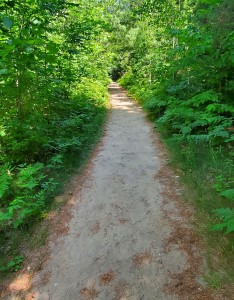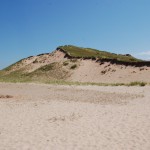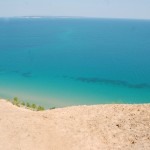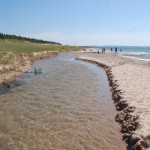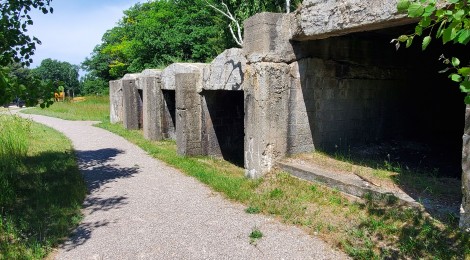
Michigan Roadside Attractions: Alligator Hill Kilns at Sleeping Bear Dunes National Lakeshore
Michigan Roadside Attractions is a periodic feature on Travel the Mitten that will explore the many interesting things that can be found on the highways, byways and back roads of Michigan, ranging from the interesting to the unusual.
Sleeping Bear Dunes National Lakeshore is one of our favorite summer destinations, and even though we visit there a few times each year there are still parts of the park we have not explored. Last year we were able to check out the Alligator Hill Trail for the first time, and in doing so we also found another awesome abandoned historical site. The Alligator Hill kilns are located at the beginning of the trail and date back to the 1950s. Today we will take a look at the history of the kilns as well as what you can expect on the 1.5 mile trail that reward hikers with distant views of the Manitou Islands and the Sleeping Bear Dunes.
A trail map is posted by the parking area, and a second sign answers three questions about the kilns. Most Sleeping Bear Dunes visitors will be familiar with the two names mentioned on the sign.
What Are Those Things? – “These concrete structures, located at the trailhead on Stocking Drive, are kilns built in the 1950’s by lumberman Pierce Stocking. The sawmill he set up near this spot produced considerable waste that was converted into charcoal in these kilns. The loose, dusty, random-sized material was packed in bags for shipment to stores in much of Michigan for sale to campers and picnickers.”
How did they work? – “The kilns are concrete ovens in which limbs, slabs, and other sawmill waste were stacked as tightly as possible. The open front was closed with concrete blocks and the wood set on fire just before the last blocks went in. Controlling the air intake was tricky: too much air and the wood was consumed, too little air and the fire went out. If successful, the fire burned slowly for several days. Once it was out, the charcoal was removed and spread to cool. Then it was moved to the bagging shack.”
Why here? – “Day Forest Hill was one of the first managed forests in this part of Michigan. The owner, D. H. Day, protected the smaller trees to promote a future lumber harvest. When Pierce Stocking purchased the land in 1948, there was enough new growth to warrant a selective harvest. The sawdust pile from his mill can still be seen on the other side of Stocking Road. After the mature trees had been harvested, the mill was closed and the kilns abandoned.”
The trail heads uphill from the kilns, where it passes through a forest full of maple and beech trees. The “easy” trail rewards hikers with the Islands Lookout. A bench here lets you catch your breath and take in the stunning landscape. On a clear day you can see North Manitou Island and South Manitou Island, Sleeping Bear Point, Glen Haven, and possibly even South Fox Island. Follow the trail back to the parking lot unless you’re looking for more of a challenge. An “intermediate” trail forks off and is almost two miles in length, offering the Big Glen Lookout over Glen Lake at its midpoint. The “advanced” trail is another optional path that eventually ends up back at the parking lot.
The parking lot for the Alligator Hill Trail is located off of Stocking Rd. From the intersection of M-109 and Glen Haven Rd., head east on M-109 (follow signs for D.H. Day Campground) for a short distance then turn right on Stocking Rd. Follow Stocking Rd. uphill and around a couple corners then look for the parking area on your left.

